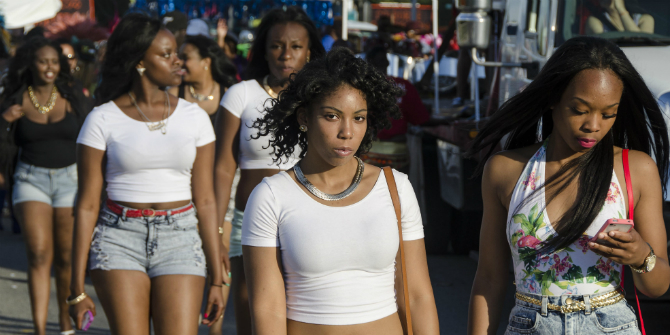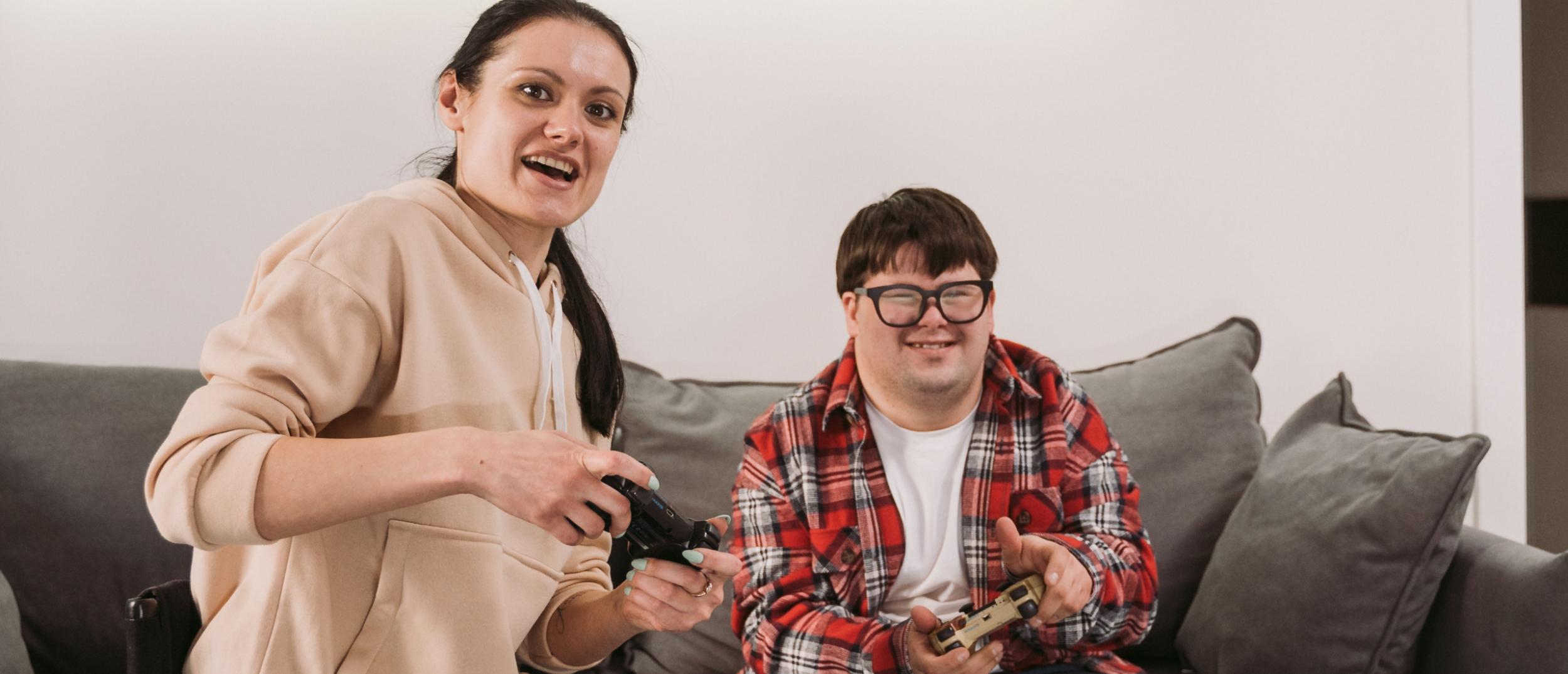 Recent media coverage on the metaverse has cast doubts on child protection. A BBC News investigation and a Channel 4’s investigative documentary both discovered racist insults, sexual materials and sexual harassment targeting children on VRChat. VRChat is a social virtual reality application in which players can embody user-generated avatars and interact with others through speech and body movement. For www.parenting.digital, Runze Hu discusses what he found about children’s vulnerability in the metaverse after spending a year in the Chinese-speaking VRChat community conducting participant observation and interviews as part of his doctoral research. He argues that media reports of the metaverse overlook the complexity of community norms and minors’ position in it, particularly the structure of these social networks, how situational proprieties are sustained, and who dwells in the metaverse.
Recent media coverage on the metaverse has cast doubts on child protection. A BBC News investigation and a Channel 4’s investigative documentary both discovered racist insults, sexual materials and sexual harassment targeting children on VRChat. VRChat is a social virtual reality application in which players can embody user-generated avatars and interact with others through speech and body movement. For www.parenting.digital, Runze Hu discusses what he found about children’s vulnerability in the metaverse after spending a year in the Chinese-speaking VRChat community conducting participant observation and interviews as part of his doctoral research. He argues that media reports of the metaverse overlook the complexity of community norms and minors’ position in it, particularly the structure of these social networks, how situational proprieties are sustained, and who dwells in the metaverse.
Different realms of the metaverse
The VRChat community has multiple layers. We may consider the social network of VRChat as a map of three concentric circles. In the outer layer, there are many new players or casual players who primarily spend time in publicly accessible worlds, freely associate with co-present players and jump between conversations. In most cases, players talk about their local communities, what they do for a living, and share their interests and hobbies. Some conversations may lead to more committed long-term friendships or being accepted into invite-only online friend groups.
In the second layer, friend groups are made of players who regularly gather and share similar interests (e.g. dancing, avatar and world crafting). Players tend to have complex social networks stretching multiple groups. Hence, groups are not isolated but deeply intersect with one another. These more experienced players most often hang out in semi-private worlds that only people in their friend list can access. These semi-public worlds are where one can learn insider knowledge about the community, including tacit rules, members’ common interests and cultural identities.
The third layer is for people who have established more intimate relationships (e.g. romantic relationships). They tend to spend more time in fully private spaces where others can only join through request or invitation.
The structure of VRChat social networks
This map of the structure of VRChat’s social network is essential for understanding the gaps in recent media coverage. The investigations conducted by BBC and Channel 4 were primarily based on short-term observation in public spaces. Their accounts depict a typical new player’s first-time experiences but by no means a comprehensive portrayal of the platform.
Interactions in public and private spaces
The public spaces indeed give different vibes from semi-private or private ones. In the public world, new players may be more experimental with the affordances using a diverse range of avatars with eccentric forms and styles, freely roaming in the space and initiating interactions. Occasionally, one may encounter players who, intentionally or unintentionally, intrude on others, for example by using large-sized or disturbing avatars, applying graphically intense special effects that distort others’ vision or crash the world, and verbally or physically harassing others. Enforcing the community guidelines and policing these behaviours mostly rely on players’ voluntary reporting. Players also can utilise the Safety and Trust System to avoid unwanted actions.
Interactions in a public space
In a semi-private or private world, players tend to use established personas and conform to the implicit ‘dress code’, usually wearing anime girl avatars. The interactions that happen in these spaces are most often relaxing, friendly, or intimate. A crucial question is why players in friend groups seem to be less aggressive than the casual or new players in the public spaces. During my long-term ethnography, I observed that there are community-level self-regulating and self-censoring mechanisms that reward or punish players’ actions. Players who observe the rules are rewarded with fulfilling long-term friendships and access to group activities while players who violate the rules, for example by verbally or physically harming others are punished with public disapproval and exclusion from groups. For example, there is an implicit rule that physically intimate interactions should be consensual and should stop if the other clearly shows unpleasantness when being touched. Players who repeatedly fail to observe this rule could be exposed and publicly reprehended or blocked by others. Hence, malicious actors are filtered out of the space and harassing behaviours in friend groups are rare.
Chilling with friends in a semi-private space
Who are the metaverse dwellers?
Recent media coverage focused on concerns about the prevalence of sexual acts but did not explain why sexualised actions and contents are normalised on platforms like VRChat. In VRChat, it is quite common to see two strangers pat or stroke each other’s heads and faces, often without knowing the other’s gender and age. If both do not show any signs of unpleasantness, the social norms permit further actions such as cuddling and kissing. Players may also simulate sex, commonly referred to as erotic role-play (ERP), but this happens most often when solid friendships or romantic relationships have been established. Most players consciously avoid simulating sex in public or semi-private spaces but a sizeable portion of players do not. Hence, it seems that the rules around physical intimacy are almost entirely tacit and mostly disregard gender and age. Also, players usually do not expect these intimate actions to be explicitly consented to in advance.
During my fieldwork, I observed that VRChat at present is occupied mainly by multiple subcultural groups including LGBTQ communities. Hence, I would argue that VRChat’s sexually charged culture is related to the queerness of its online community and its role as a space for sexual freedom and experimentation. Japanese Otaku culture is a major source of influence and most experienced users tend to wear innocent, cute but sexualised anime girl avatars, while sometimes speaking in “male-sounding” voices. This cross-dressing tendency is also related to the community’s affinity to the online gay, queer and transgender communities. These influences have turned VRChat into a space for experimenting with gender identities and sexualities. Some people openly identify as trans or queer and experience gender euphoria through intimate avatar interactions. There are also straight male players using the anime girl body to experiment with gay sex. Throughout the platform, gender and sexuality are fluid, played with, and constantly challenged in social interactions, and are often enacted in totally unexpected ways with a ludic attitude. These sexual activities can be harmless when performed by consensual adults in private online spaces but this is often not the case which raises issues for children’s online safety.
Children’s vulnerabilities in VRChat
While VRChat is officially for people aged 13 years and over, many spaces and activities in it are created by adults and for adults. Children have to bear the social pressure of trying to fit in and emulate adults’ behaviours such as alcohol consumption and sexual activities. During the ethnography, I asked people about their age to ensure I do not accidentally collect children’s personal information without parental consent, but most VRChat players do not ask these questions. Even when they do know if their counterpart is over the age of consent, adult players rarely consider the ethical and legal boundaries of socialising in these online worlds. In this sense, this environment could potentially breed child sexual abuse and grooming. Children who are new to the platform could find themselves in even riskier situations due to the higher chance of encountering harassing behaviours in the public domain.
On the other hand, children might intentionally seek participation in VRChat’s gay, queer and transgender communities as they offer an anonymous and embodied way of experimenting with identities. Children’s desire for exploring gender and sexuality should be acknowledged but how to keep the online environment safe for such experimentation is where the difficulties arise.
As Andy Phippen recently suggested, there are no realistically enforceable mechanisms for age-gating and policing communications in social VR and we cannot count on the big tech to solve the safeguarding issues. Rather, we all have a role to play. I would suggest the first step is to help all stakeholders, including parents, educators, policymakers and children themselves to acquire the necessary knowledge for navigating this new digital frontier. A new set of rules and norms may hopefully emerge if we are knowledgeable enough about the risks involved in the metaverse.
First published at www.parenting.digital, this post represents the views of the authors and not the position of the Parenting for a Digital Future blog, nor of the London School of Economics and Political Science.
You are free to republish the text of this article under a Creative Commons licence crediting www.parenting.digital and the author of the piece. Please note that images are not included in this blanket licence.
Image credit: Photo by Vazhnik on Pexels








